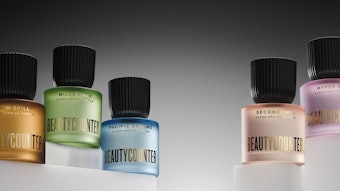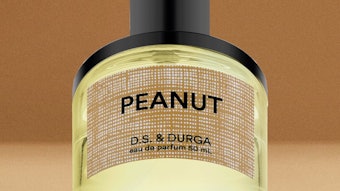- Businesses have been built on the premise of giving consumers more and more; now, serving and selling to consumers has shifted to creating better and better products.
- A superior fragrance or flavor experience in the context of an established brand makes the overall consumer experience better, building that brand.
- A brand has the potential to live forever, if managed well.
- Constantly assessing how much to invest in core brands versus how much to invest in new product categories and brands that will grow the business is crucial in rough economic climates.
Two key factors are simultaneously converging on and, in the process, reshaping the beauty industry, says Steve Hicks, P&G’s director of flavor and fragrance development global capability organization.
The first is the global economic crisis, which is hitting both fragrance and flavor suppliers and their customers. “This is going to put a lot more [emphasis on] innovation to grow sales and profitability,” Hicks says. In addition, he notes that regulatory pressures and criticisms from NGOs regarding ingredients continue to ramp up. These challenges, he says, are epitomized by REACH legislation in Europe and recent negative attention on air fresheners in California. How, then, will the industry be impacted?
Fewer, Better Launches
“The demand from [brand owners] is going to shift,” says Hicks. “It’s going to shift from more perfumes to better perfumes.” From fine fragrance to consumer products, he explains, the market, and thus the consumer, is oversaturated “with every conceivable consumer product line extension.” The ever-growing pace of launches simply cannot continue. “Certainly, we and others are going to continue to launch smart line extensions of our brands and fill consumer segments,” Hicks says. “But we’re going to put more and more emphasis on big blockbuster fragrances that have real staying power and things that we can view as classics in time, as opposed to fragrances that just come and go. I think the consumers are going to want that in a world where they’re looking for more simplicity. We’ve all built businesses giving them more and more, and now I think they want better and better.”
Reshaping the Industry for Financial and R&D Depth
In addition to the products it formulates, Hicks believes that the fragrance and flavor supplier landscape will evolve in response to both the dramatic cost of doing business under REACH and maintaining the resources necessary to continually deliver new technologies and materials—in addition to creativity. “There are about 800 ingredients that will have to go through REACH registration for perfumes,” he says, adding that the cost of doing so is “not insignificant.” The financial pressure on companies could make some reconsider whether or not to invest in certain materials. Meanwhile, he says, “Companies that have a pipeline of good technological and chemical innovation, and the great creative resources to be able to use them are going to continue to thrive. I think companies that lack one of those things—more specifically, if they lack the pipeline of new technology and new chemicals and rely only on creativity—are going to suffer. If you’re missing one of those, you’re really playing in the same sandbox as everybody else, and that’s a tough place to compete. What I advise the industry is: I need both. I’m sure other consumer product companies look at it the same way.” As a result of these factors, Hicks says that fragrance and flavor suppliers could likely see further consolidation in order to achieve sufficient “financial and R&D depth.”
Continued Strong Investment in F&F
“Fragrance is what I call one of the ‘ultimate multipliers’ in this business,” says Hicks. “We developed Tide to make cleaner clothes and Pantene to make softer and shinier hair, and Crest toothpaste for healthier teeth. But a superior fragrance or flavor experience in the context of those brands makes the overall experience for the consumers better. Superior flavors and fragrances build brands for us.” Delivering this “consumer delight” in addition to performance results in brands that are greater than the sum of their parts: “It’s like 1 + 1 = 3.”
“I think you’ll continue to see strong investment in fragrances and flavors by companies like mine,” he says. “That’s for a good reason: the consumers respond. [Flavors and fragrances] certainly contribute to the size of our business because of that.”
The Cost Basis of Developing Markets
Like other consumer products companies, P&G has identified strong opportunities for continuing economic and brand growth in the developing world. However, says Hicks, “the hard reality in terms of the fragrance business is that there is a different cost basis. The cost profiles that we’ve all been able to afford, in developed markets like Western Europe and the United States versus what you need to be able to compete in India or China or Southeast Asia, are different.” He offers the example of Crest toothpaste, which originated in the U.S. and now appears on the Chinese market. While the brand has been successful in this new arena, Hicks points out that even the premium price points in China fall in the range of just $1 or $2. Non-premium offerings of course sell for much less. “It’s extremely successful,” Hicks says of the brand, “but it’s an entirely different economic reality. You have to look at how you balance the economics of the flavors and fragrances that you use so that you can offer value to the consumers based on what they can afford in those marketplaces.”
Challenging Belief Systems
“Part of our philosophy [at P&G] is challenging belief systems,” says Hicks. “Sometimes I find that belief systems in a category can hold that category in a grip that limits its innovation. [P&G has] always believed that it has fundamentals that can translate well between businesses.” The company’s unexpected entry into fine fragrances in the early 1990s highlights this business philosophy. Founded 172 years ago, P&G evolved from a candle company to a soap company to an organization with expertise across dozens of consumer product categories. “We’ve had strong capabilities in flavors and fragrances inside the company for decades,” says Hicks. “We made a choice to have the ability to create perfumes inside the company and have kept that capability.” Combining this internal expertise, partnerships with fragrance suppliers and lessons learned from optimizing brands in other categories, P&G grew its modest fine fragrance business of “tens of millions of dollars” into a “multibillion dollar business behemoth.” Hicks notes, “It’s arguably one of the more successful things that we’ve done in the broader beauty care business.”
Hicks adds, “We discovered we can innovate in new fine fragrances in ways that drive enormous consumer passion. Some of it involved reapplying some of the consumer understanding work and development techniques from other parts of the business, and some of it was things we learned that were novel to that category. There are some people who might believe there’s nothing in consumer product perfumery that could possibly benefit fine fragrances or that there’s nothing in fine fragrances that would be affordable in consumer products, or that consumer understanding research limits creativity. We found [that] none of that is true.” P&G, in Hicks’ words, has “laddered up” consumer product perfumery aspects into fine fragrance while bringing affordable facets of fine fragrance to consumer categories. Meanwhile, he credits much of the company’s consumer loyalty and passion to consumer understanding.
Relationships with F&F Houses
P&G sources its fragrances and flavors internally, from its tiered list of suppliers or in creative collaboration with these suppliers. As a result, the company purchases everything from individual aroma chemicals to bases to specialties to finished fragrances and flavors. In addition to its in-house creative staff, P&G maintains four perfume oil manufacturing plants around the world. The only aspect of the business the company does not participate in is the manufacture of new aroma chemicals. “It is a close partnership,” Hicks says of P&G’s fragrance and flavor suppliers, “particularly given our size. The magnitude that this business represents to our top-tier partners is very significant—nine-figure significance.”
Of the creative collaborations, Hicks says, “We believe that to be a major competitive advantage. If I look at it from a creation standpoint, a lot of what we do is collaboration. We get what we call perfumer-to-perfumer collaborations between a P&G perfumer and a [fragrance] house perfumer. Those collaborative partnerships often generate the best perfumes I get. You’ll find that the two artists will create together a perfume that is different from what each of them individually would have been able to do because they all create in the context of their own history [and background]. If you get a healthy relationship between two perfumers, they will create wonderful things together that they may not have been able to do individually.”
“Would we ever go to a world where I don’t need fragrance companies and I only [formulate] internally?” asks Hicks. “No, I’d lose a lot. We’ve also looked at it the other way. Would I ever abandon internal perfumer capabilities and go completely to outsourcing from fragrance houses? No. I get some enormous advantages because of that capability we have inside.”
Connect + Develop
P&G’s close relationship with fragrance houses mirrors its overall strategy of open innovation, highlighted on its Connect + Develop innovation portal (www.pgconnectdevelop.com). As noted by P&G’s chairman and former CEO A.G. Lafley, “External collaboration plays a key role in nearly 50% of P&G’s products.” Hicks explains that the company has developed relationships with academic institutions, suppliers, entrepreneurs, venture capital startup firms and even competitors in its focus on both internal and external R&D opportunities. In addition to acquiring so-called “cooked,” or near-complete, innovations such as Swiffer and the Mr. Clean Magic Eraser, P&G products such as Pantene, Downy and Tide contain components derived from Connect + Develop relationships. “It has made our R&D far more productive,” says Hicks. “We don’t feel like we have to do everything. It’s brought us better ideas. It has changed the culture of R&D within P&G.”
Formulation Innovations in Sustainability
The classic model of innovation has sought to deliver new technologies to brands in order to offer new benefits to consumers. Today, Hicks notes, innovation has broadened its scope to include cost reductions, optimized business processes and sustainability—without a loss of performance or quality for the consumer. “We own iconic brands that have lasted for decades,” he says. “Our outlook is that brands can live forever, if you manage them right. We’re going to be here 172 years from now, still trying to improve the lives of consumers worldwide. To do that, we have to have a sustainable world, and we have to contribute to that sustainability.” While P&G directs some sustainability efforts toward the control of energy consumption and water usage in its own operations, it also views sustainability as it relates to its brands. “We don’t want consumers to face major trade–offs between product performance and brand experience and sustainability,” says Hicks. Meanwhile, he says that sustainability must be meaningful, and thus carefully measured. Here Hicks cites the example of compacted laundry detergents in North America. “The sustainability impact of that is huge: the reduction in petrochemical use, the reduction in shipping water around in this country, the value we could pass on to consumers was [significant].” In another instance, P&G performed cradle to grave energy consumption analyses of its brands, following the trail from suppliers to consumers. Hicks says the company was surprised by the findings. “The largest energy consumption associated with our entire business is the energy that consumers use to heat up the water in their washing machines,” he says. “Nothing else even comes close. The innovation we did was Tide Coldwater.” Here again, the key lay in providing the benefit without sacrificing performance. “I think where we’ve seen things not work is when you force consumers to have to make that trade–off: this is more green or sustainable, but your clothes won’t be as clean. We don’t think that’s necessarily smart business.”
“I’m often asked the question [by suppliers], ‘What if we compact perfumes?’ or ‘What if we can claim the perfumes come from all natural sources?’ ” says Hicks, who believes the industry can do far more for sustainability. “Redesigning a perfume that enables us to compact the consumer product it goes into has 100 times more effect on waste reduction and energy consumption than compacting the perfume itself,” he continues. “If you think of the challenge in designing a consumer product with a perfume in it, you’re designing it to have a certain experience and performance—when you’re using it, after you’re using it and so on. You have all these things in balance. As soon as you compact a product, all that changes. [One] of the things we’re trying to do with our partners is design perfume systems that still give the consumer the ideal fragrance experience all the way through the life of the products.”
Meanwhile, he says, “Naturals are wonderful materials, and perfumers love them. But the reasons synthetics have [become so important] is that naturals are [rather] expensive and vary in quality and supply availability. You can’t base your whole business in today’s world on naturals.” And, he says, “What are we really bringing consumers if we did that? Maybe the way to think about this is in terms of how we make the synthetics and how we use them in our products—something truly meaningful.”
Product Mixes in Hard Times
Companies constantly assess how much they invest in core brands versus how much they invest in new product categories and brands that will grow the business in the future. This is particularly crucial in rough economic climates. “Everyone will want to invest in that core,” says Hicks, “because growth in that has the best consumer reception and, ultimately, gives you the best financial return.” Brands can either upgrade existing brands or add line extensions, though Hicks notes, “you can take either of those too far.”
“You’ve got to get the balance right between how much you invest in your core business and what you do in terms of big, disruptive innovations,” says Hicks. “If you look at the past 50 years, the things that have proven to be gigantic for [P&G] were very disruptive innovations that started from scratch”—Tide being a prime example.
Jeb Gleason-Allured is the editor of Perfumer & Flavorist magazine.










